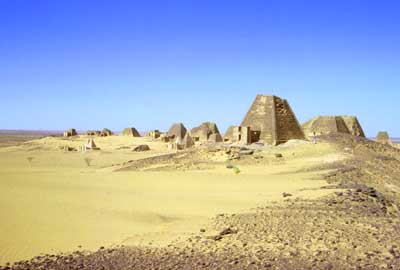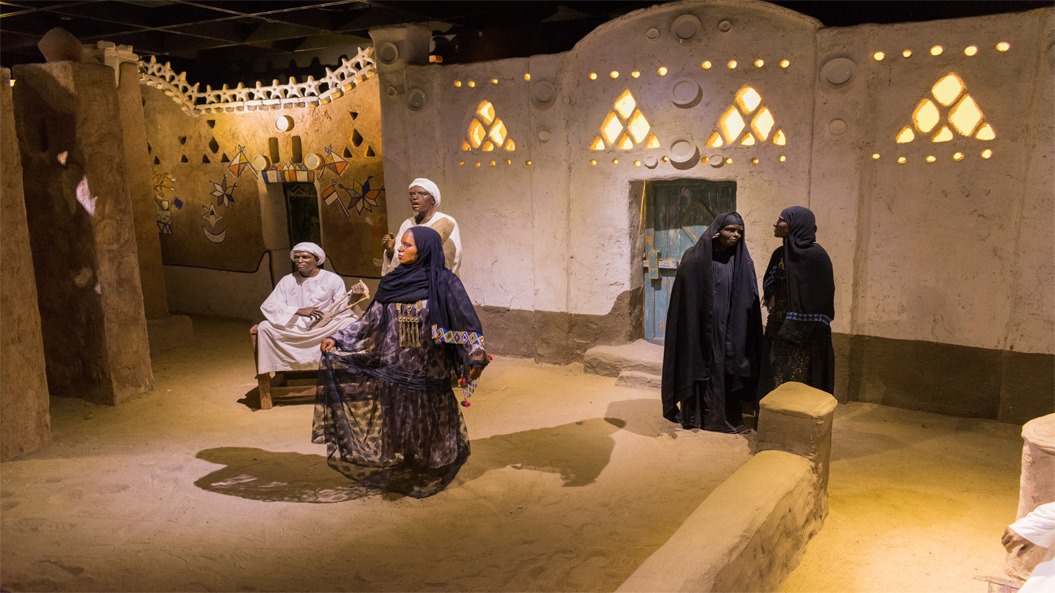Nubia , Land of Gold


The original land of Nubia is situated between the southern part of Egypt, the northern part of Sudan, the territory of the Baja, the Ababda, and the Bishariya tribes in the east, and the Sahara in the west. Since time immemorial, the land of Nubia was always an important trading point, where the Egyptian gold mines were located. Some researchers believe that the name Nubia comes from the word nub which meant gold in the language of ancient Egypt, hence the land of gold.”
Nubian houses are considered to be a unique folkloric cultural phenomenon, one that clearly expresses the customs, the traditions, and the beliefs of the Nubian people.
A close look at ArTIKA WADI KiKi outdoor rooms painting will show that the designs on the hafayiz (protective charms”), hijab (amuler) as the Nubian Jewelry and pendants are the same as those on the woven straw platters. The crescents and stars on the façades of their homes are the same as the pendant worn around the neck called sinn ‘aj, or ivory tusk. I believe that Nubian women are the creative element and the ones who inspire the jewelers to execute the designs on the charms, amulets, and pendants. All the details are taken care of to give the real nubian experience.
One of the characteristics of Nubian houses , which cover a wide space on the chest in front of Nile land , is their clear-cut designs. Most of the buildings are simple flat rooms , mostly made of mud . Besides the crescent and star shapes which compose the nubian jewelry, there are also triangular and round shapes, or fish shapes covered with the same designs as the woven straw. Art pieces are of a medium size.

Nubian lifestyle , embodies all the arts and culture of Nubia. Nubian women are artists by nature; they are the ones who decorate the façades of their homes with drawings and decorations depicting trees, birds, crescents, and stars. They are also very clever at weaving straw and reeds of bright colors into artistically interwoven triangles and squares, shaping them into platters or concave dishes for serving popcorn and dates to guests. They also weave the mats to be spread on the stone benches built outside the house, or to be spread on the floors of their rooms. On her wedding day, the bride must sit on a brand new bursh, or mat, that she will later hang on the wall of her room. Nubian women also weave fans out of colored threads that they tightly wrap around oblong units of thin reeds; the fans are much needed in the summer heat. They also make the taqiya, or caps, worn by the men, decorating them with different colored designs, and they embroider their transparent, black head veils with beads in beautiful flower-shaped designs of lovely colors.
Two indigenous languages developed in Nubia in written form: Meroitic and Old Nubian. The scripts of these two languages reflect the cultural influences of the period i.e. Egyptian hieratic script for Meroitic, Coptic script for Old Nubian.
*Aswan or Assoun , The ancient city known by the beautiful Nile Valley scenery, significant archaeological sites and its peaceful aura.
During the Christian era of Nubia (6th -14th century AD), Nubian used to be written (Old Nubian) in the Coptic script to which a few signs were added corresponding to sounds of Nubian unknown to Coptic. The first attested written documents date from the 8th century AD. During the 12th century AD the written form of Nubian was well established . It stopped being written when Islam replaced Christianity in the area (fall of Nubian kingdoms 13th-14th centuries). At this time however, the Coptic language became a dead language and Arabic was the written and spoken language of the majority of Egyptians, including the Coptic Church.

